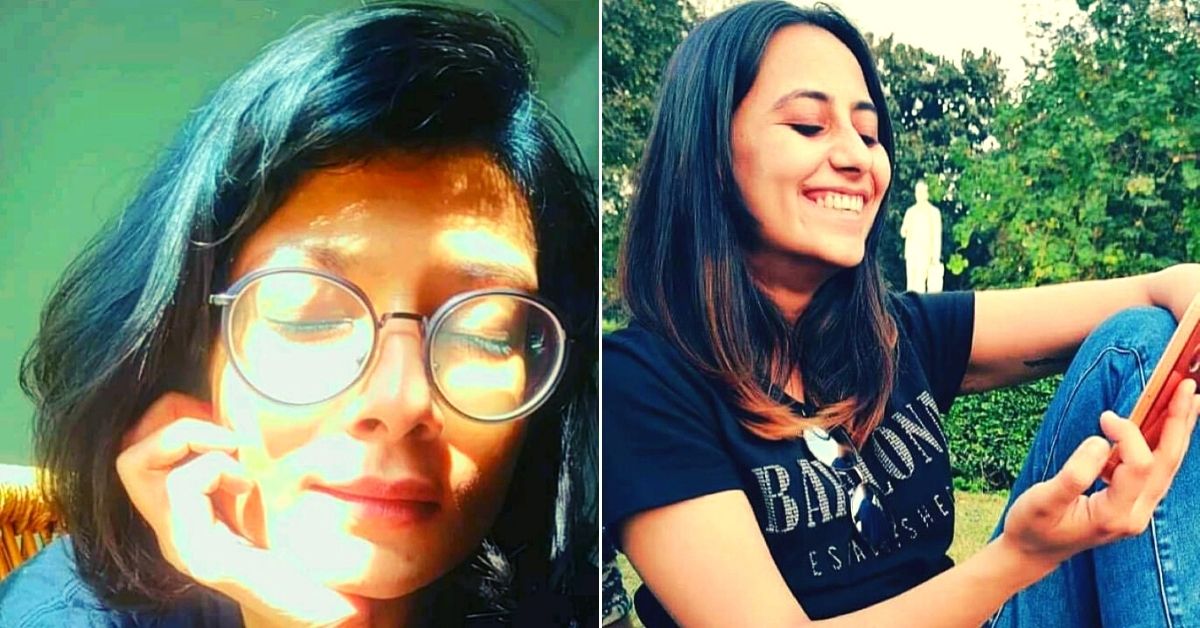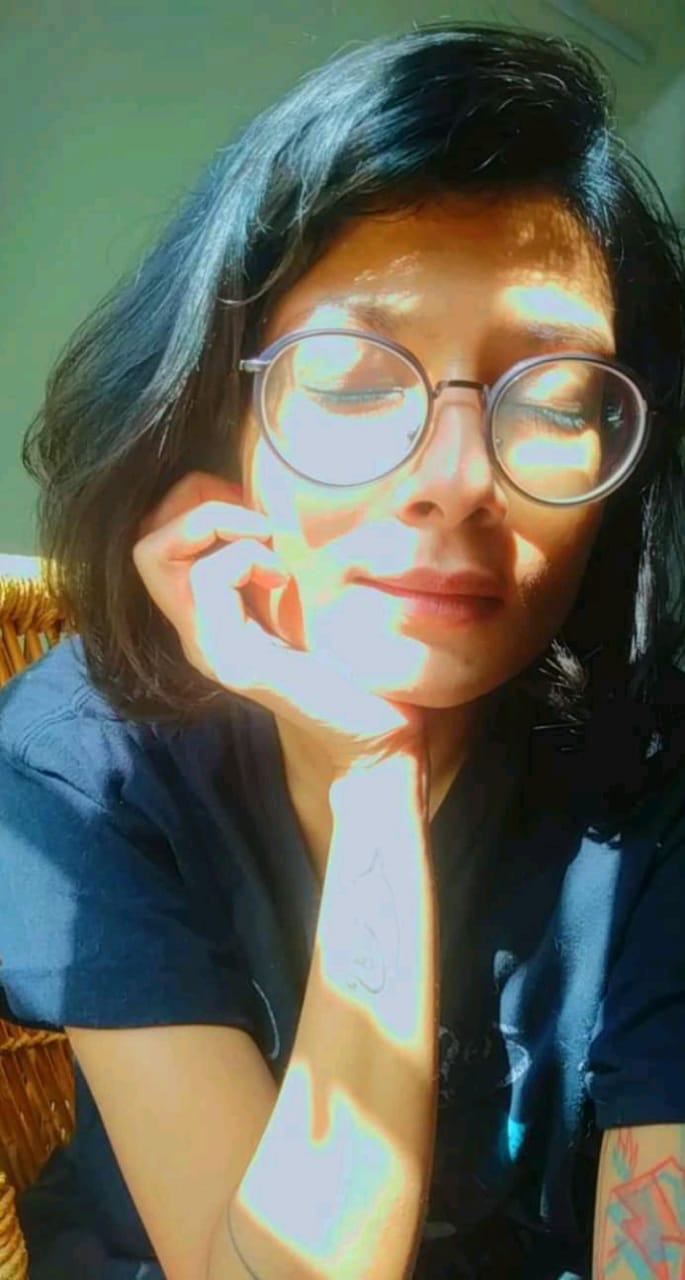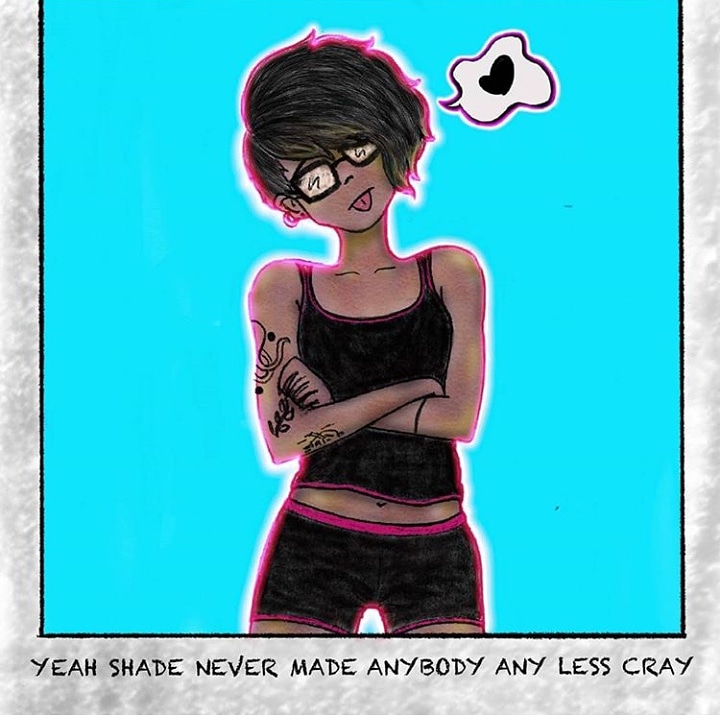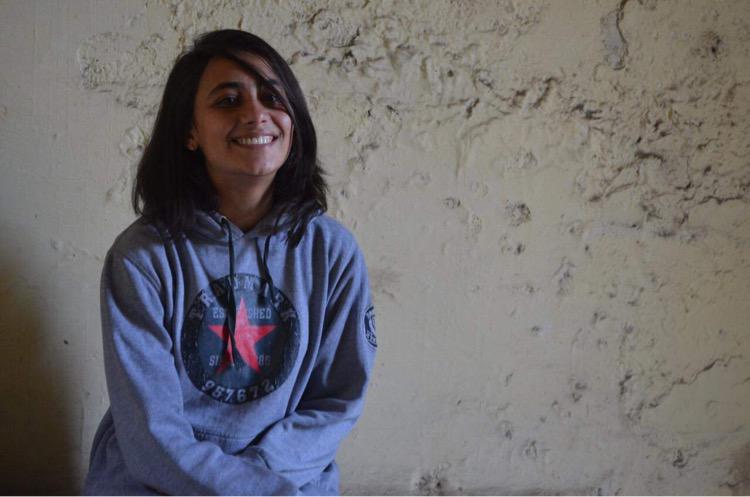What Does It Mean to Live With Bipolar Disorder? Listen to These 2 Women
In the wake of the death of an actor, a lot of misconceptions about bipolar disorder became known. These two women tell us about what it actually is like.

Earlier this week, after the Mumbai Police informed reporters that Sushant Singh Rajput, the recently deceased Bollywood actor, had been diagnosed with bipolar disorder and took medication for the same, the issue of mental health has come under sharp focus.
However, the kind of coverage we have seen on the subject, particularly television media, has been shockingly misinformed. Instead of educating audiences, many news media outlets have gone on to perpetuate many of the old stigmas attached to bipolar disorder and mental health.
To address this concern, we at The Better India, spoke to two women diagnosed with bipolar disorder, who have been brave enough to speak out about their lived experiences, misconceptions surrounding it and how we can better care for them.
Sreejita Biswas (aka Solo), Age 33, Writer-Illustrator in Advertising & Publishing
Sreejita has been going to see a psychiatrist since she was 14 years old. She was first taken to one after complaining that she had been molested by her uncle. Instead of invalidating her complaint, her parents decided she must get help for it because living with that trauma in silence wasn’t an option. They wanted her to get better and feel safer.
“As a teenager, I identified as lesbian, and my interest in men only came much later in life. At the time, I went to an all girls school, where I was bullied as well. I had a lot of gender dysphoria issues to deal with it too because when I was 14, there weren’t many conversations about sexuality and gender. Whatever I felt at the time was considered evil and abnormal by society. So, I was having a difficult time. However, I finally got diagnosed with bipolar disorder when I was 25. Three years later, I was also diagnosed with borderline personality disorder (BPD). Given the fact that both conditions are characterised by unstable moods it took a very long time for me to get a diagnosis because in India, especially when it comes to women, psychiatrists either over-diagnose or under-diagnose you,” recalls Solo.
Another reason why it took her so long to get a diagnosis was because she was, in her own words, an ‘overachiever.’ She worked twice as hard to prove how ‘normal’ she was in this world.
“All of my achievements have been a way to show the world that I am trustworthy despite having mental illnesses and so on. As a result, it took me a long time to get a diagnosis. Contrary to popular belief, you can have both disorders and can live a healthy life,” she says.

How does it affect her life on a day to day basis?
Explaining both conditions to people who are not mentally ill (neurotypicals) isn’t easy.
“I have realised that neurotypical people really lack the ability to understand the degree of extremes that someone with a severe illness can go through. When you’re speaking about either bipolar or BPD, it’s usually characterized by extreme mood swings like a sudden spike in energy or an absolute depletion of energy. You’re constantly oscillating between mania and depression. It’s kind of difficult to explain what you’re feeling. Despite getting so much professional help, I still don’t have full control over all my emotions. In a world where people are largely unkind to people with mental health issues which are not easy to understand, you tend to get very defensive. Anger is one major outlet. I have extreme mood swings. I can be really angry or really friendly. When people want to understand bipolarity in like 250 words, it’s a bit of a challenge especially when there is a definite lack of empathy in understanding major personality or mood disorders or mental illnesses,” she says.
On a day to day basis, one minute she could be full of energy and completely drained the next. That’s the biggest issue she faces personally. But the bigger external issue she faces on a day to day basis are neurotypical people in a world where everybody is talking about depression and anxiety and mental health.
“When I meet people, I come across as someone who is ‘normal,’ has a share of achievements, an apartment, pets and a decent relationship with her partners, parents and friends. When neurotypical people look at me, they don’t realise that beyond all of that there is a part of me which I am trying very hard to control. That part can really put my life on hold and this is something many don’t understand. There are times when people get used to me being energetic, which in medical terms, is manic. When I am depressed, they tend to automatically assume that I am being lazy. That is not the case. It’s because of this assumption that I have had to work twice as hard as my neurotypical peers,” she says.
This has consequences on her employment prospects as well.
“As a consequence of my disorder I can’t afford to have a full-time job. Even though I might come across as someone ‘well-adjusted’’, doing something as ‘normal’ as having a job is very difficult. My disorder has an impact on my social life, finances, health and it isn’t easy for people to understand why it is so difficult for me to be ‘functional enough’,” she says.
But Solo has been someone who has been very upfront about her disorders and she credits this to her family, who have been very supportive.
“Ever since I was a kid, I was never made to feel that there is something so wrong with me that I hide it. My family and friends have been very supportive about it since many of them have a history of mental illness. My family gave me a very kind space to grow up in and that is what I really miss in the real world beyond my friends and family. What we suffer from most is neurotypicals misunderstanding us despite us trying to articulate what’s wrong with us. More than my medical condition, it’s the stigma that surrounds bipolar disorder or BPD that has been very difficult for me,” she says.
Appearing ‘happy’, ‘normal’ & ‘functional’
You can appear to be ‘happy’, ‘functional’ and ‘normal’, but Solo realised very early on her life that ‘normal people’ can be very unforgiving no matter how much they talk about empathy, kindness or share posts on social media about self love and self care and acceptance.
When they are actually faced with someone who is mentally ill, they will not be empathetic enough.
One of the biggest problems Solo has with a lot of mental health influencers is that they make it sound so trivial that it can be dealt with by looking into a mirror, smiling at yourself and saying ‘I love myself’. That is not the case. If people with bipolar take their advice of ‘be yourself,’ they won’t be accepted by this lot, she believes.
“They won’t get why I am being energetic one minute and sad the next. They will not understand why I am hallucinating out of paranoia. They will not understand why fears are coming into me, but will still oversimply my condition saying, ‘hey, you should love yourself a little more’. This is also why people with major disorders are forced to embrace this whole facade which makes people look at them and say ‘she’s normal’. At the same time, I have been institutionalised, almost killed myself and died because of bad medication. These are not the things people want to talk about,” she says.
A lot of people who are actually bipolar turn to using humour to help people understand them better. But thanks to influencers on social media, this ends up becoming relatable memes.
“That leads a lot of people to self-diagnose themselves and even self-medicate. BPD and the bipolar disorder are very serious mental illnesses and not just relatable memes,” she says.
Also, there’s a tendency to either romanticise or villainize disorders like BPD and bipolar disorders. Common responses usually oscillate between ‘Oh my god, you are so brave to live with this’ or ‘Oh my god you are absolutely horrible and should be locked away’.
“Neither of these responses are accurate by any stretch of the imagination. I am not brave just because I live with a disorder and I am not horrible either,” she says.
Addressing misconceptions
She thinks the biggest misconception about bipolar disorder is that a lot of people tend to term every single mood swing as bipolarity.
“I also have a set of physical symptoms that I have to also deal with that come with being bipolar. I also suffer from a rare genetic disorder called EDS which has got nothing to do with bipolarity, but because of my condition I have a lot of medical issues to deal with. My tachycardia is worse because I am bipolar. I am scared to go outside because of my bipolarity and how the paranoia affects me. I am not comfortable with doing so many things which I would have been able to do if I had not been bipolar,” she says.
Solo also blames mainstream media for its shockingly poor portrayal of bipolarity.
“When people speak of bipolar or BPD, you immediately think of a Cersei Lannister from the Game of Thrones, someone who is manipulative or wants things their way. You think of an extreme narcissist with immense rage, which is all consuming and all destroying. What neurotypicals don’t realise is that these very public outbursts are always an act of desperation because we are not being understood enough. Nobody wants to be considered as scary. If you talk to people who don’t know me very well, the first thing they say is ‘Solo is so scary’. I am not scary, but kind, empathetic and helpful, but the thing is I also understand the need to protect myself in a neurotypical world which is looking for the smallest excuse to attack me by using phrases like manipulation, narcissism,” argues Solo.
Those are the sort of misconceptions she has majorly faced in her life. She blames pop culture, but also wholeheartedly takes on life coaches and social media influencers who are watering down bipolar or BPD so much that people misunderstand it.
“People suffering from these disorders must talk about it more openly because we don’t want to be mollycoddled by influencers, and be treated like children by people who think we aren’t loving ourselves enough. Honestly, I do love myself enough. But that does not change the fact that there are going to be times when I can’t think about getting on with life or kill myself. Bipolarity is not something that is written on your face. People around us have to be more patient, let us talk, they cannot step up and say ‘you’re bipolar, you don’t know what you’re talking about’. If I am feeling manic, I have a right to tell people I am manic. If I am feeling depressed I have the right to tell people I am depressed,” she adds.
Expectations from society
She lives with a housemate, who has been diagnosed with major mental illness.
“We are each other’s caregivers. We have made a home for ourselves on our own. Despite being bipolar, institutionalised, coming close to death, I made it so far because I have been fortunate enough to get help, be on medication and understand how important to eat well, sleep well, exercise, take care of myself, switch off from social media and maintain distance from people who are constantly triggering me. That has helped me,” she says.
But, of course, there are varying degrees of bipolarity. Just because she is able to do these things, not everybody else diagnosed with it will.
“What works for me may not work for someone else with bipolar disorder. It’s up to each one of us to find out what works for us and talk to our families, friends, colleagues and explain to them what is going on. It’s up to them to be patient and kind. With support, patience and kindness, I have learnt a lot about being accountable and responsible. It has worked wonders because I have had such a supportive group of people around me. Fighting mental illnesses and stigma is impossible when you’re alone. The ones who love me give me strength. I also think that this might not have been possible without getting professional help,” she says.

Pratyaksha Pal Choudhary, Age 25, Freelance Digital Marketeer
Pratyaksha was diagnosed with bipolar disorder in November 2017, but it was three months prior when she felt something was amiss. Unable to get up from her bed for 10 days after getting sacked from her first job, she initially thought it was a classic case of depression and the first psychiatrist she saw in Bengaluru had seemingly confirmed her suspicions.
“The psychiatrist first put me on antidepressants after hearing out my problems. Two weeks after I had first started on my anti-depressants, my condition got worse. I started having panic attacks that would go on for 25-30 minutes. These attacks were so bad that half the time I wouldn’t remember that I just had one. I would have difficulty breathing, cry my eyes out and wouldn’t even remember that these things had happened to me,” she recalls.
When things got this serious, her boyfriend spoke to her parents. She initially went to Delhi, where her sister used to live. In Delhi, she showed another doctor the prescription from her previous psychiatrist in Bengaluru.
“Instead of asking what I was going through or what the symptoms were, my doctor in Delhi took one look at the prescription and increased the dosage. There was no conversation between us. I continued that treatment for about a month. After a month, things got very serious. I was depressed when I started out, but eventually I went into a state of mania. What happens is that your actions became risky to yourself and other people around you. Eventually my sister asked me to go home, which is Bikaner, and there I went to another doctor. There I was eventually diagnosed with bipolar disorder,” says Pratyaksha.

How does it affect her life on a day to day basis?
“This is a subjective question. Bipolar disorder affects each one differently. In my specific case, I have phases of depression which last for about 1-1.5 months followed by a state of mania and the cycle continues. I am currently on one medication, a mood-stabiliser, which prevents me from either going into a state of mania or depression and sort of balances everything out. There are certain side effects of the medication which do hamper my daily life, but I need to be consistent with it. If I am supposed to take a particular medicine at 10 pm, I have to take it either at 9 pm or 11 pm. Another concern I face regularly is mood swings. Either I am extremely happy, where I want to go out and party, or I am so depressed that I don’t want to get out of bed. I have physical pain in my body because of that depression. I have fatigue to such an extent that it becomes a task even to visit the washroom. These are things I majorly suffer from on a day-to-day basis,” she says.
Bipolar is both genetic or gets manifested because of childhood or any other significant traumas. In her case, it was both genetic and a series of childhood traumas. Since this is a neurological condition, it also affects her spinal cord.
Appearing ‘happy’, ‘normal’ & ‘functional’
If Pratyaksha meets a person who does not know about her illness, she does appear as someone who is ‘very normal’.
“Once some people learn that I have been diagnosed with bipolar disorder, they say, ‘We don’t think you have bi-polar’ or ‘you look pretty normal’ and the classic ‘we don’t think you have two different personalities’. People assume that if you’re bipolar there is a different personality within you which they have not come across yet. They will assume things about me that is far different from my lived experience,” she says,
However, where she has suffered the most for her condition is in her professional life. She recalls two occasions when she has been sacked not because of her performance, but once her employers found out about her condition. Even at workplaces where she has been upfront about her condition, employers have been less than accommodating.
“Consulting with my therapist, I decided to be open about my condition while interviewing for a job. I told them about my medication, need for regular treatment and how my bipolar disorder had a serious physical effect on my spinal cord as well before they offered me a job. My manager was initially very understanding. The first four months were great, but then I had a serious problem with my spine and began taking treatment for it. I was advised one month of bed rest. When I asked my office for one month’s work from home, my request was denied. Treatment was very expensive. I was spending Rs 14,000-15,000 per week on it. In order to make that treatment successful, I needed to follow certain guidelines like exercise at a certain time or bed rest for a month. This is a job profile which should be flexible enough to offer me the option of working from home since I only need a laptop and good internet connection. They denied my request for work from home,” she recalls.
She ended up going to the office for the entire month, injuring her spine further, and because of fiscal concerns she had to stop treatment for her spine.
“As a result, my back will give me problems for the rest of my life. Even when employers were transparent with me and expressed a desire to help, they refused to go beyond a point,” she adds.

Addressing misconceptions
One major misconception people have of people with bipolar disorder is that they consider them to be ‘unstable’. “In a professional environment, most would not look forward to hiring me because in their head if I have a mental illness, I am ‘unstable’. If I have bipolar disorder, it does not mean I am an ‘unstable’ person or ‘unfit’ to function in a civilized society. This tag of being ‘unstable’ translates into ‘lack of fitness’ for a professional setting,” she recalls.
She also has many friends who come to her to get ‘therapy’ since she has weekly therapy sessions and sees a psychiatrist regularly.
“They believe that since I go to therapy, I could probably help them better, which is absolutely the wrong approach. Just because I go for therapy, it does not mean I am professionally equipped or qualified to give you my suggestions. Instead, I encourage them to visit a therapist individually and address their own problems. In my own capacity, I have successfully encouraged 7 people to get therapy,” she recalls.
Support system
“When I was at home going for therapy sessions to a doctor my family knew well, my mother would tell family friends and relatives that I had a cold. My family is very conservative. For a long time, they kept my illness hidden from everyone else. It took them until a year ago to fully accept my condition. This past year has been a lot more helpful because I am in a position to better explain my problems. Even today, they don’t talk about my condition openly, but they are still open about the idea of me seeking therapy because they saw me struggling with my speech, body movements and emotions. They themselves would never accept going to therapy though,” says Pratyaksha.
Despite being there for her throughout, Pratyaksha’s boyfriend still has trouble understanding her mood swings. To address his concerns, she asks him to read more about bipolar disorder, even though it may not help entirely.
“Caregivers who don’t suffer from mental illness should go for therapy sessions and talk to professionals about how to help someone with bipolar disorder. Don’t go with your partner or family member suffering from bipolar disorder, but ask professionals questions about their condition and how they can perform better as a caregiver. Seminars or online webinars could help in this regard. Every person with bipolar disorder may not exhibit the same symptoms, so it’s important for a caregiver to personally ask a professional therapist individual questions about their partner or family member with bipolar disorder,” argues Pratyaksha.

Expectations from caregivers and doctors
One issue that has a major impact on the wellbeing of a person with bipolar disorder is not taking timely medication. Pratyaksha has apps on her phone which remind her to take medication, but there are certain times when she actually forgets.
“It would be great if my caregiver follows up with me and asks whether I took my medication. I expect my caregiver to periodically check on me whether I am taking my medication on time and say it in a non-threatening or judgemental way. In my case, if I don’t get proper sleep for nine hours, my mania gets triggered. If I am not eating on time, my mania gets triggered. If I am not sleeping on time, my depression gets triggered. I would like my caregiver to understand that these are symptoms and he can’t dismiss them saying ‘you’re on medication, so nothing can happen to you now’. I would still like them to check up on me regularly. Most times, I am not looking for someone to solve my problems, but actually sit down and listen. I need to feel that there is some empathy being shown towards me. Caregivers must help people with bipolarity the way they want to be helped. Otherwise, it’s useless. My current doctors follow up with me on a regular basis. If I miss my therapy sessions or don’t book for it, they personally reach out to me, asking me if I am doing okay. My doctors have gone above and beyond their capacity to help me,” she says.
(Edited by Gayatri Mishra)
Like this story? Or have something to share? Write to us: [email protected], or connect with us on Facebook and Twitter.

Similar Story

‘I Had to Be a Caregiver at 12’: A Delhi Woman’s Listening Circles Are Helping People Heal
Delhi resident Namarita Kathait grew up not understanding her mother’s behaviour, which later was diagnosed as schizophrenia. Driven by her experiences and the need to promote the importance of mental health, she co-founded ‘The Listening Circles’ emphasising the power of sharing and listening as tools for healing.
Read more >
If you found our stories insightful, informative, or even just enjoyable, we invite you to consider making a voluntary payment to support the work we do at The Better India. Your contribution helps us continue producing quality content that educates, inspires, and drives positive change.
Choose one of the payment options below for your contribution-
By paying for the stories you value, you directly contribute to sustaining our efforts focused on making a difference in the world. Together, let's ensure that impactful stories continue to be told and shared, enriching lives and communities alike.
Thank you for your support. Here are some frequently asked questions you might find helpful to know why you are contributing?


This story made me
-
97
-
121
-
89
-
167












